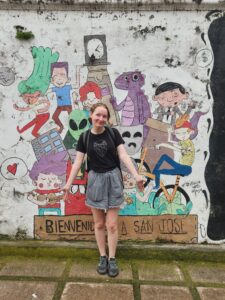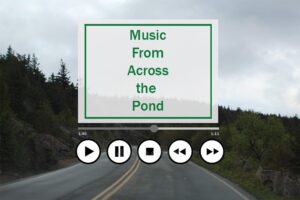Over the weekend, my mom visited Bulgaria for a brief time. She was already in Amsterdam, but she made her way to Eastern Europe. She had never been to Bulgaria or a country like this, and I forgot about the initial shock that comes upon entering Bulgaria. Between the signs in the Cyrillic alphabet, the lack of English speakers, the communist apartment blocks and the different socioeconomic status, it is certainly quite different from the U.S. However, this also made me realize how much I have adapted and gotten used to things. I no longer find Bulgarian things, such as getting terrible service at a restaurant, the huge smoking culture or the fashion, to be strange. It is hard to believe that just three short months ago this was all new to me. It feels like I have been here a year.
I met my mom on Friday at the Grand Sofia Hotel, a five-star hotel. I got out of the hour-long taxi ride from Blagoevgrad, and stepped into the heart of Sofia. Our first destination was a free Sofia walking tour, which was two hours long and ran past sunset. However, we saw nearly every major sight in the city, ranging from the St. George’s Church, to the Presidency Headquarters, Roman ruins and a 16th Century mosque. Although the tour was two hours long, it still felt rushed, so we decided that we would go back and explore some places in more detail the next day. Before the tour we had eaten dinner outside at a table as most Bulgarians do at the restaurants. In Sofia, just as in Blagoevgrad, there is a pedestrian walking street with restaurants lining both sides with outdoor tables, and cigarette smoke everywhere. While it is annoying to have to breathe in smoke while consuming your food, I have grown accustomed to it.
My mom was also surprised to learn that in the hotel room, you cannot get electricity without inserting a room key card into the light slot. I remembered this from another Bulgarian hotel I stayed at, and we solved the mystery of why none of the lights would turn on. In Sofia, they also charge many things in euros for tourists, such as the hotels and the shuttle rides, even though the whole country of Bulgaria uses the lev as a currency. The euro generates far more money. I warned my mom against using a taxi when she first arrived in Bulgaria, so she used the hotel shuttle, but they largely overcharged in euros.
On Saturday morning, we visited the outskirts of Sofia, in the village Boyana. We went to Boyana Church, a 10th Century church with layers of frescoes. The walls were all adorned with paintings of religious icons. We then visited Vitosha Mountain, which you are supposed to be able to hike up to. However, we were on a strict schedule with the taxi driver. We then wanted to try to take a chairlift up, which you can do, but he said that we would not have time. Then, I had probably the most Eastern European thing happen to me: the driver drove us up a very long road halfway up the mountain, and stopped at a crumbling, abandoned hotel on the mountainside. On the door, there were about five signs advertising that we needed to pay five leva ($2.80) to go inside the abandoned hotel and out to a crumbling terrace filled with vines and overgrown plants, to see the view of Sofia down below. It was admittedly a very nice view, and we were already so high up that if we had gone farther up in the gondolas we probably would not have been able to pick out any of the buildings down below.
After a very eventful and strange morning filled with pushy Bulgarian tour guides and taxi drivers, we were finally able to grab some lunch and see the Alexander Nevsky Cathedral, arguably the most beautiful attraction in Sofia. After this, we visited St. George’s Church (also from the 10th Century) and the Russian Church with gold onion domes.
Sunday was the most jam-packed day. We had hired a Bulgarian tour guide, who drove us from Sofia to Rila Monastery early in the morning. This is the main attraction to see in Bulgaria, and while I have been to it once before, it was even better this time, with fewer crowds. This is also from the 10th Century. Bulgaria has an extremely old and fascinating history. After Rila, we drove to Melnik, the smallest village in Bulgaria, consisting of 200 people but one of the most popular tourist sights due to its location in the wine region. We ate at a traditional Bulgarian restaurant, toured a historic Bulgarian house, and did a wine-tasting at a beautiful winery in the mountains. Overall, the weekend was a whirlwind tour of Bulgaria, and definitely gave my mom a proper introduction to this strange but beautiful country.







